This building was 40 years old which is 14,600 days, but this collapse happened the day after a crane was loading roofing materials on the roof and the day after fall protection anchors were installed. The parapet detail Warrenslo posted has a 5'-6" cantilever, but when analyzed the moment hinge point should be center of support which is about 5'-10". The slab is only 6" thick and the reinf only #4@13" oc. Using structure dead loads plus 10 psf for roofing material and 30 psf for live load, the factored moment is 4.08 k-ft/ft and the factored capacity is only 3.99 k-ft, so assuming perfect conditions, this was a design error. Add rebar corrosion, which is likely under the hot wet roof, possible damage by the installation and testing of the epoxy bolts, and possible live load overload from roof materials or removed debris stockpiles, and it is highly possible that this cantilever slab failed first. The impact of falling concrete is the weight times the fall distance/deceleration distance. If the height is 120 feet = 1440 inches and the deceleration is 2", a 50 lbs piece of concrete imparts 50lbs x 720 = 36,000 lbs. 500 lbs = 360,000 lbs. Negating wind friction, for a 120' fall, the debris would be traveling 60 mph at impact.

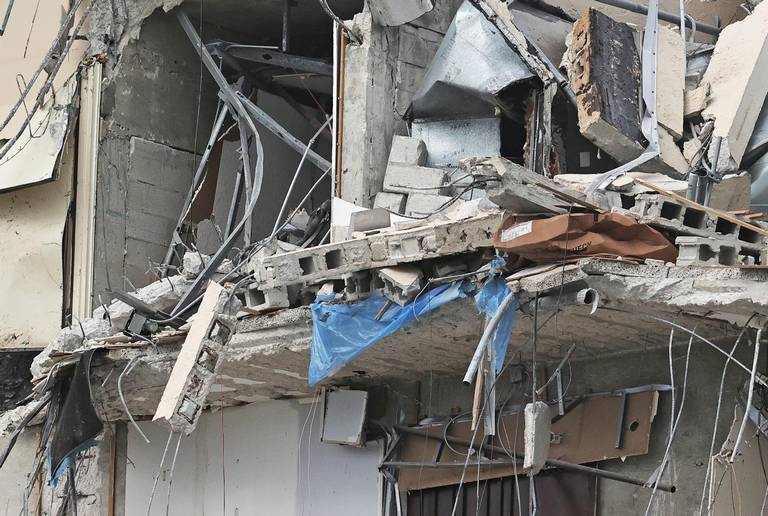
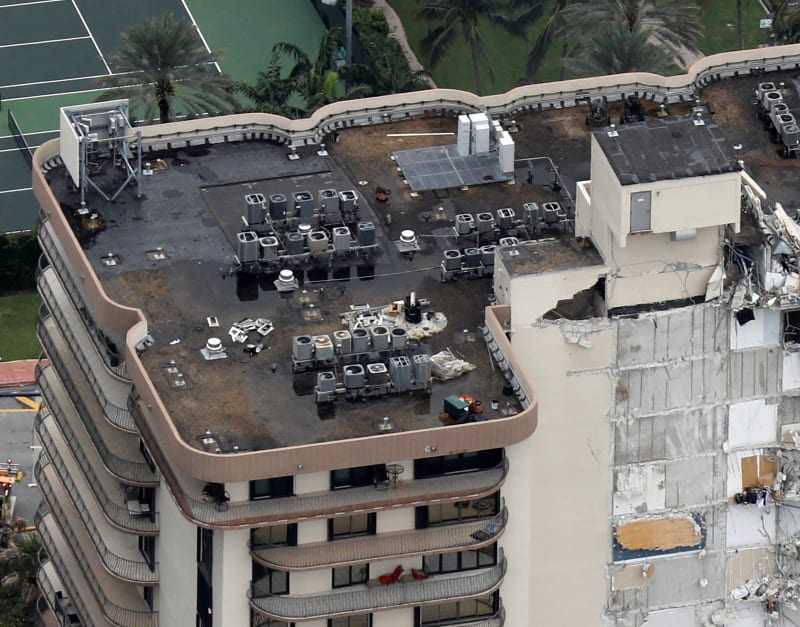
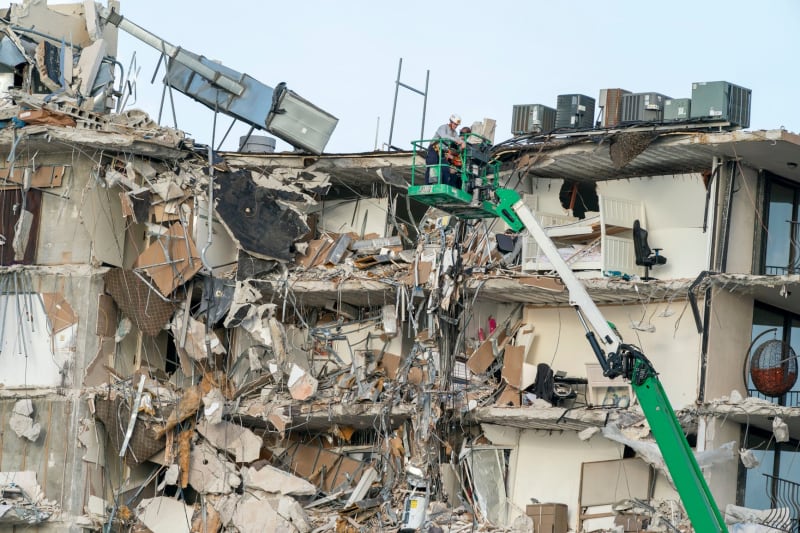
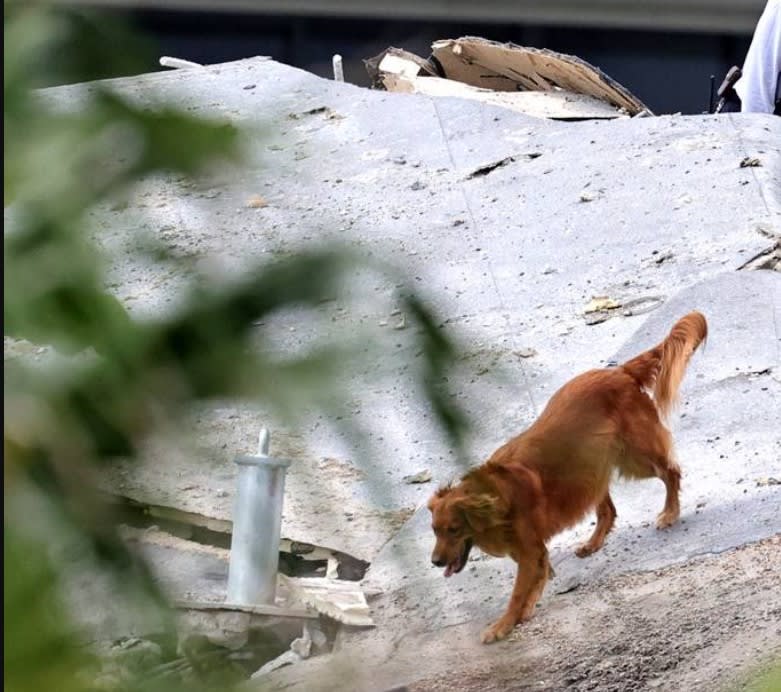
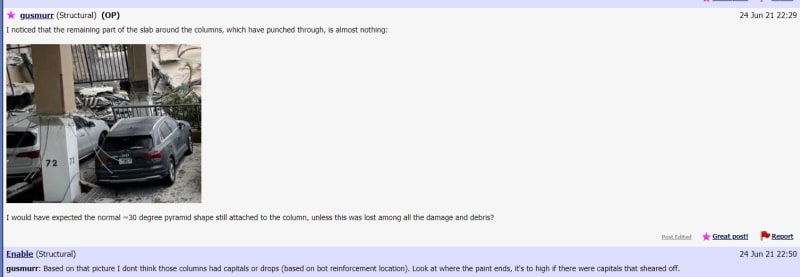
![[surprise] [surprise] [surprise]](/data/assets/smilies/surprise.gif)